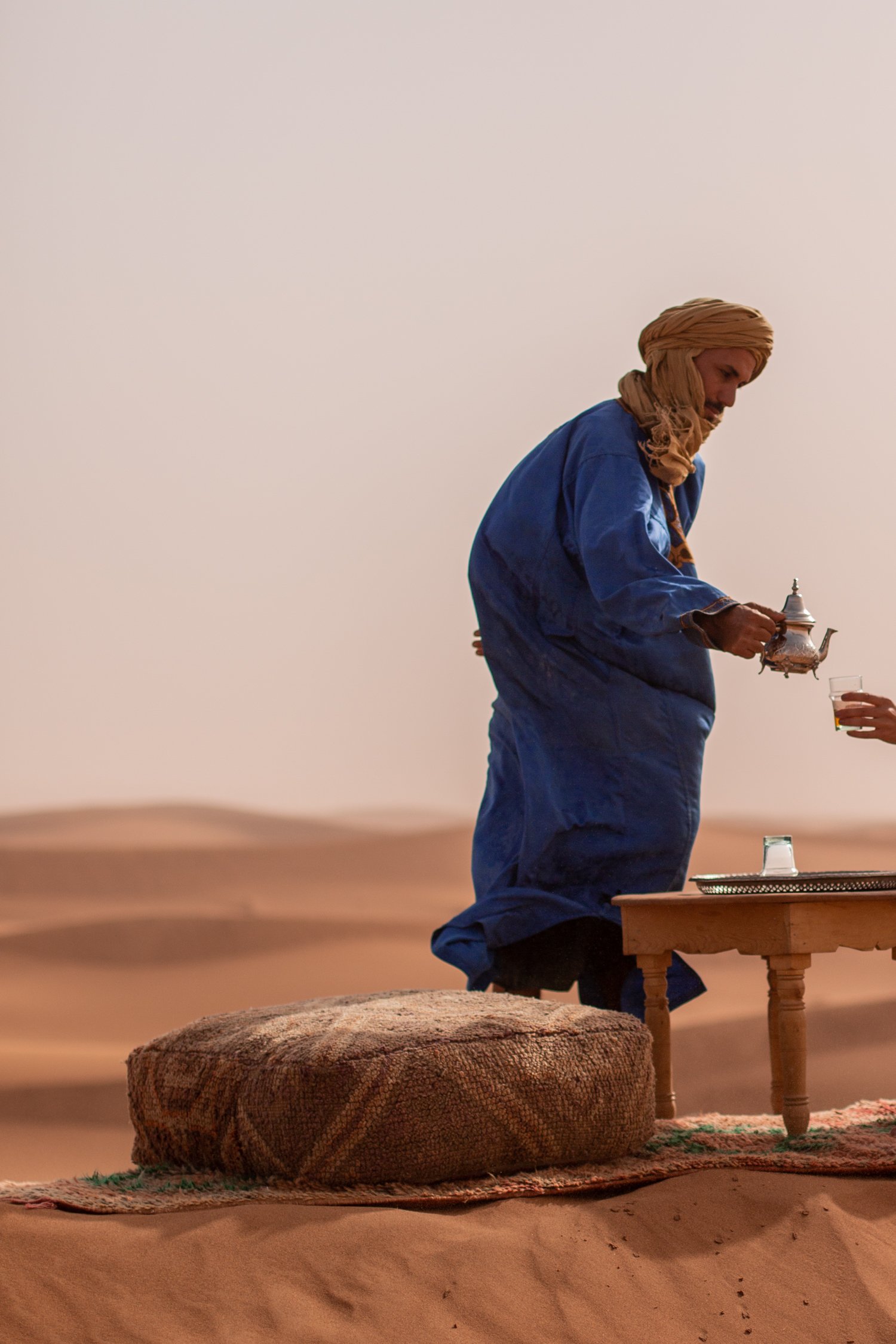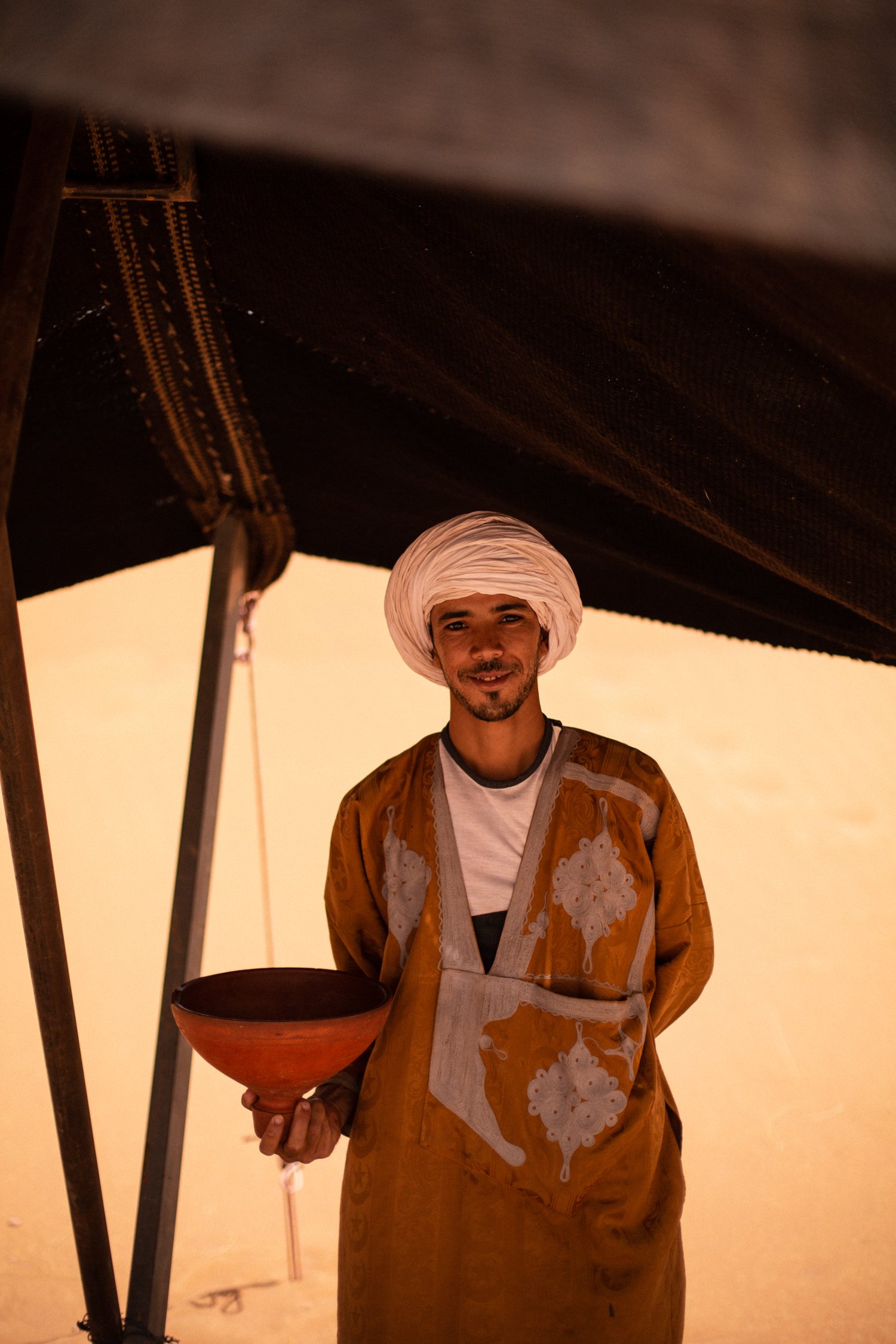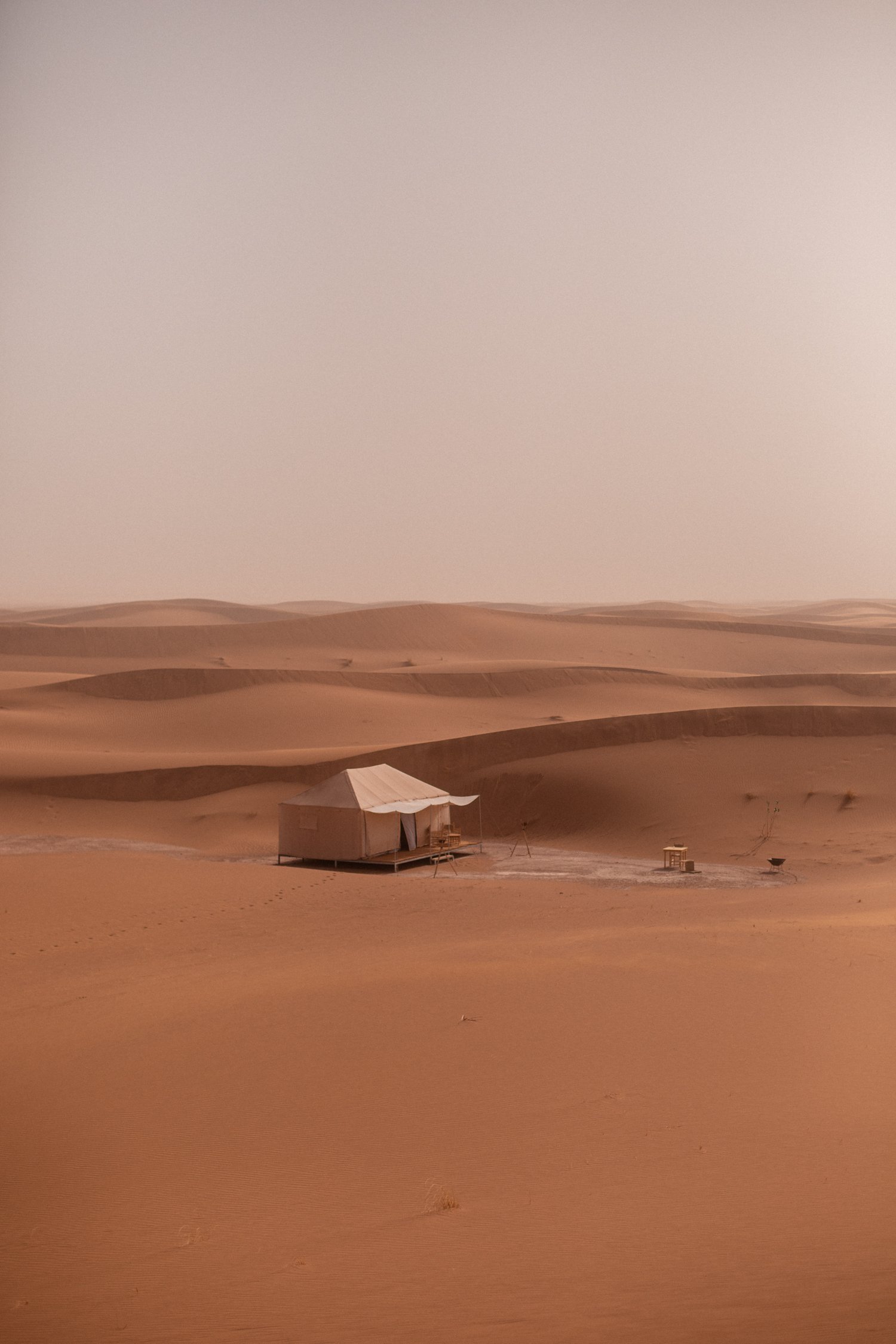Nights in the Sahara Desert: Umnya Dune Camp
Travel was not always a big part of my life. When I was younger, airports and hotels were nothing but a daydream. But I knew I wasn’t meant to stay in one place. I always sought adventure. Perhaps it’s because I was itching to get out of my hometown, Montreal—a city that had become all too familiar. And like most defiant teenagers, I craved a change of scenery far away from home.
I started saving money to book short trips where I could. And as my international escapades multiplied, I soon realised that travelling was a non-negotiable pursuit. Seeing sunsets in different places, meeting new people—it all served to remind me of how small and interconnected I was in an expansive universe.
Over the years, my job as a professional photographer has taken me to some pretty great sites, where the best memories I have are those when I’ve felt lost without a landmark. Yet, there are still plenty of places I’m hoping to tick off my bucket list, several of which seem farfetched and dreamlike.
Take the Sahara Desert, for example, with its vast rolling dunes and almost vacuous presence. It’s sometimes hard to believe that such a marvel is natural. I just didn’t think the opportunity to visit would come so soon.
The story
With a background in luxury tourism, a young man named Anas connected instantly with a nomad living in the desert, Salah. Between them, they shared a love for an itinerant lifestyle centred on simplicity. Their mutual admiration for the desert invited them to explore an idea that would result in a far-off nirvana, which allowed visitors to better understand the land around them. Impressively, the entire camp was built and furnished within three months, opening in January 2019.
Anas and Salah are officially known as Umnya’s ‘chief nomads’, and when they contacted me, it was a chance albeit welcome surprise. We agreed to work on a project together with the intent of enticing people to roam and ramble through a series of images that I’d capture. Such prospects hardly ever feel like work, so I was thrilled to go.
The voyage
Journeying to remote destinations is often an arduous task, even for the most seasoned of travellers. While a couple of options are available, your best bet is to take a direct two-hour flight from Casablanca to Zagora, where the camp owners ensure someone is waiting promptly for pick-up.
But the peregrination doesn’t end there. And for those who experience motion sickness: brace yourselves. Driving along the rippling desert terrain in a 4×4 Jeep Wrangler can be entirely taxing to the mind and body.
As we trudged along, I noticed there were no visible markers or signposts. Google Maps is obviously out of the question, but navigating through the desert, especially after dark, seems close to impossible. The sand, the dunes, it all looks the same. But my driver, an ‘homme bleu’ seemed to know what he was doing.
Exhausted and in desperate need of uninterrupted sleep, I arrived at Umnya around 9pm where Anas and Salah greeted me. They had prepared a wonderful welcome dinner, and I could hardly wait to feast on the salad and Berber couscous, chockfull of vegetables. I opted to take my meal outside, and what a treat it was to drift from the day under a sky aglow with stars.
The camp
In a space removed from civil normalcy, I didn’t know what to expect besides solitude for the two nights I was there. Accommodation at Umnya is divided by the dunes, offering total privacy for guests. During my stay, I got to occupy two different tents, each rendering comfort and extravagance conducive to traditional Moroccan design.
First up, the 7m x 4m Superior Suite, located adjacent to the main area. It’s complete with twin or double beds, an open lounge, small table, private terrace, a heater and an ensuite shower room with extra towels and toiletries. The suite is dreamy and delicate, perfect for small families or couples. It was more spacious than I conceived, and waking up to a drowsy sun peeping through the drapes left an impression that’s hard to describe nor forget.
For my second night, Salah arranged the Royal Suite Noor, a deluxe 8m x 4m abode fit for crowned heads. Notable amenities include a lounge area with a writing desk, plush Moroccan floor cushions and table, an ensuite with an eco-toilet, shower, towels and toiletries, a heater, and a private terrace with a campfire.
At Umnya, sustainable living is not only a priority, it’s an inevitability. There’s no electricity, and in an attempt to reduce waste (a significant problem in Morocco), there’s a water pump on hand for bathing and drinking.
The nourishment
In countries like Morocco, where native cuisine tends to be meat-centric, I feel like a liability as a pescatarian. But Umnya caters to any dietary need. While fish isn’t an option, vegetarian and vegan dishes are aplenty in the form of tajines and breakfast spreads, including msemen and baghrir—both variations of a pancake. All food is prepared sans oil, resulting in a slightly charred, crispy taste.
Then of course, there’s the famous Moroccan tea ceremony, symbolising hospitality and warmth. Ever since I was little, I’ve been partial to this cultural staple. I’ve tried Moroccan tea in many forms in many countries. But partaking in a tea ceremony in the desert, as the day elapses, is whimsical beyond measure.
The activities
Along with the tea ceremony, Umnya offers an extensive range of activities that will make your visit a memorable one. Whether you’re spending time with family, friends or a romantic partner, there’s something to soothe everyone’s soul. Maybe it’s heading to the driving range or trekking with the nomads. Or perhaps sandboarding is more your thing.
To slow down the tempo, I recommend trying a sand bath, which uses ancient healing methods to alleviate pain and discomfort. The camp runs several detox and yoga retreats throughout the year, calling anyone looking to unwind for a few days.
But it’s the evenings at Umnya that are my favourite. Warm up next to a campfire and soak in authentic Berber culture with music and dance, featuring popular folklore bands and bellydancers.
The packing checklist
As to be expected, when you’re off the grid, electronic resources are limited, so be sure to bring portable power banks and extra batteries should you need them. That said, staying at Umnya is a prime opportunity to get away from it all, and I would encourage you to disconnect completely. Your overworked brain will thank you.
As for what to wear, layering is essential. Temperatures in the desert oscillate between a dry heat in the day and cooler breezes at night. Breathable materials, such as linen or cotton, are apt for the climate, as well as a few cosy knits to keep warm at night.
The afterthoughts
If you’re looking to experience something truly unique set against a breathtaking backdrop, come to Umnya. You’ll learn first-hand how the nomads live in isolation. But more importantly, you’ll feel freedom intertwined with a tremendous sense of peace—something that rarely happens in fast-moving societies.












